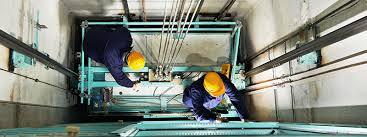A Comprehensive Guide to Elevator Maintenance Regulations in Dubai

Elevators are crucial in ensuring the efficient movement of people and goods within high-rise buildings in Dubai. Given the rapid urban development and the increasing number of skyscrapers in the city, maintaining elevators according to the set regulations is imperative for safety, reliability, and compliance. This guide will outline the essential elevator maintenance regulations in Dubai, helping building owners and facility managers navigate the regulatory landscape.
1. Understanding the Regulatory Framework
1.1 Dubai Municipality Regulations
The Dubai Municipality is the primary regulatory authority overseeing elevator maintenance and safety in Dubai. It has established various guidelines that building owners must adhere to:
-
General Requirements: Elevators must comply with local safety standards and regulations set by the Dubai Municipality.
-
Maintenance Frequency: Regular inspections and maintenance must be carried out to ensure elevators operate safely and efficiently.
1.2 Emirates Authority for Standardization and Metrology (ESMA)
ESMA is responsible for setting the national standards for elevator safety and maintenance. Their standards align with international practices, ensuring that elevators in Dubai meet global safety benchmarks.
-
Compliance with UAE Standards: Elevators must meet the specifications outlined in UAE standards, including the UAE Fire and Life Safety Code.
2. Key Maintenance Regulations
2.1 Regular Inspections
-
Frequency: Elevators must undergo inspections at least once a year. However, the frequency may increase based on the elevator’s usage and specific requirements outlined by the manufacturer.
-
Documentation: Inspection reports must be documented and maintained for review by regulatory authorities.
2.2 Maintenance Contracts
-
Qualified Personnel: Maintenance must be performed by qualified personnel or licensed elevator service companies. Technicians should have the necessary certifications to ensure compliance with safety standards.
-
Service Agreements: Building owners should establish service agreements with elevator maintenance companies that outline the scope of services, response times, and maintenance schedules.
2.3 Emergency Preparedness
-
Emergency Plans: Buildings must have emergency response plans in place for elevator-related incidents, including evacuation procedures in case of entrapment.
-
Emergency Equipment: Elevators should be equipped with emergency communication systems, such as intercoms, that allow passengers to contact building management or emergency services.
2.4 Compliance with Safety Standards
-
Safety Features: Elevators must be equipped with safety features such as emergency brakes, backup power supplies, and door sensors.
-
Load Testing: Regular load tests must be conducted to ensure that elevators can handle the specified weight capacity safely.
3. Documentation and Record Keeping
3.1 Maintenance Records
Building owners must keep detailed records of all maintenance and inspection activities, including:
-
Inspection Reports: Documentation of all inspections conducted by qualified personnel.
-
Maintenance Logs: Records of routine maintenance tasks performed on the elevator system.
-
Repair Records: Detailed accounts of any repairs made, including the nature of the repair, parts replaced, and associated costs.
3.2 Compliance Documentation
-
Certificates: Obtain and maintain certificates from service providers indicating that maintenance and inspections were conducted according to the regulations.
-
Regulatory Submissions: Submit necessary documentation to the Dubai Municipality or relevant authorities when required.
4. Penalties for Non-Compliance
Failure to comply with elevator maintenance regulations can result in significant penalties, including:
-
Fines: Building owners may face monetary fines imposed by the Dubai Municipality for non-compliance.
-
Liability: Non-compliance can lead to legal liabilities in the event of an elevator-related accident or incident.
-
Operational Shutdowns: In severe cases, authorities may order the shutdown of elevators until compliance is achieved.
5. Staying Informed on Regulatory Changes
Building owners and facility managers should stay updated on any changes in elevator maintenance regulations. This can be achieved through:
-
Professional Associations: Joining industry associations that provide updates on regulatory changes and best practices.
-
Regular Training: Ensuring that maintenance personnel receive ongoing training on the latest regulations and technological advancements in elevator systems.
Conclusion
Elevator maintenance regulations in Dubai are designed to ensure the safety and efficiency of elevator operations in the city’s bustling high-rise buildings. By adhering to the established guidelines set by the Dubai Municipality and ESMA, building owners can not only enhance safety for users but also maintain compliance and protect their investments. Regular inspections, thorough documentation, and engagement with qualified maintenance providers are essential steps toward ensuring elevators operate smoothly and safely in Dubai’s dynamic urban landscape.


